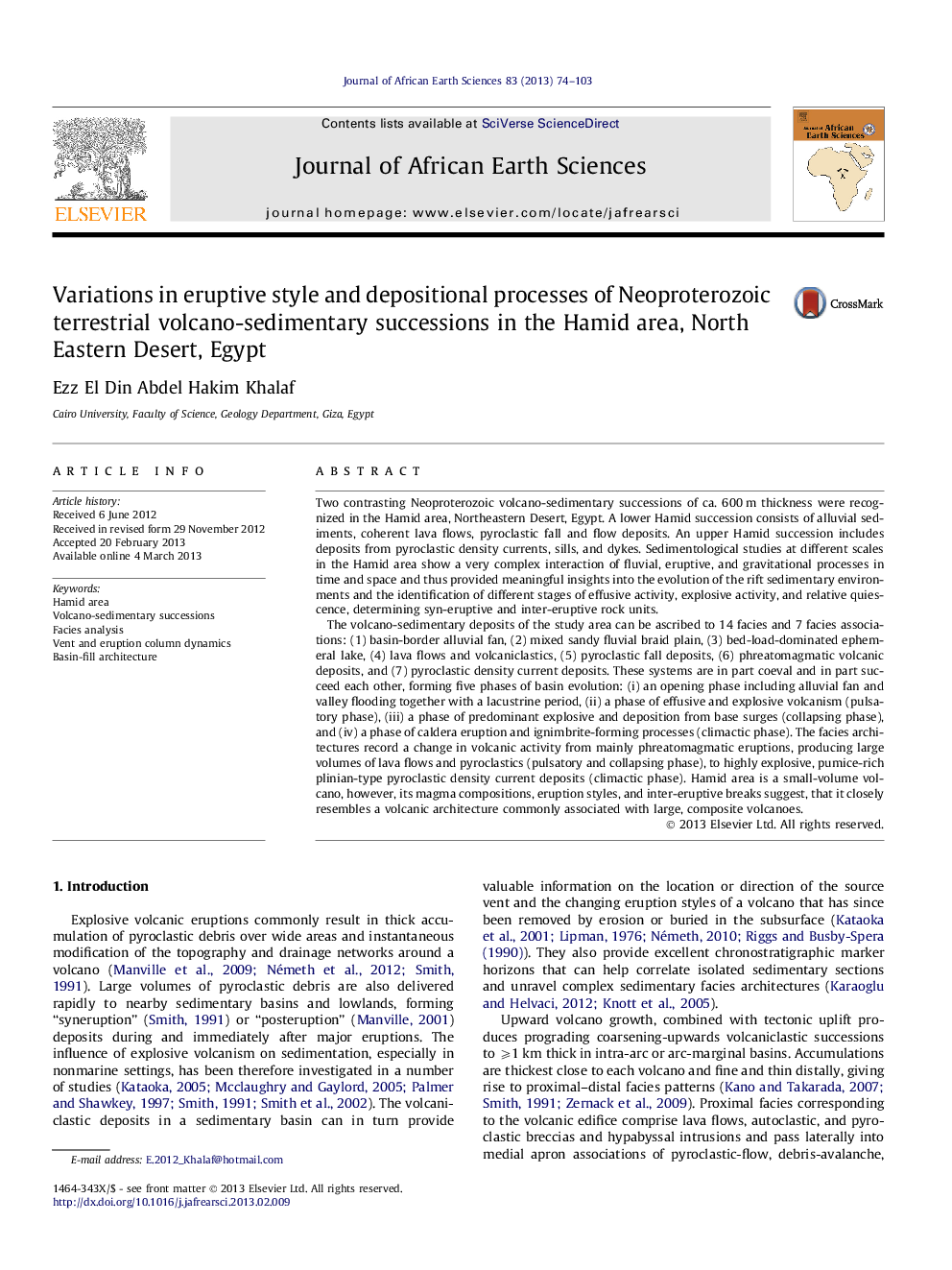| کد مقاله | کد نشریه | سال انتشار | مقاله انگلیسی | نسخه تمام متن |
|---|---|---|---|---|
| 4728960 | 1640223 | 2013 | 30 صفحه PDF | دانلود رایگان |
Two contrasting Neoproterozoic volcano-sedimentary successions of ca. 600 m thickness were recognized in the Hamid area, Northeastern Desert, Egypt. A lower Hamid succession consists of alluvial sediments, coherent lava flows, pyroclastic fall and flow deposits. An upper Hamid succession includes deposits from pyroclastic density currents, sills, and dykes. Sedimentological studies at different scales in the Hamid area show a very complex interaction of fluvial, eruptive, and gravitational processes in time and space and thus provided meaningful insights into the evolution of the rift sedimentary environments and the identification of different stages of effusive activity, explosive activity, and relative quiescence, determining syn-eruptive and inter-eruptive rock units.The volcano-sedimentary deposits of the study area can be ascribed to 14 facies and 7 facies associations: (1) basin-border alluvial fan, (2) mixed sandy fluvial braid plain, (3) bed-load-dominated ephemeral lake, (4) lava flows and volcaniclastics, (5) pyroclastic fall deposits, (6) phreatomagmatic volcanic deposits, and (7) pyroclastic density current deposits. These systems are in part coeval and in part succeed each other, forming five phases of basin evolution: (i) an opening phase including alluvial fan and valley flooding together with a lacustrine period, (ii) a phase of effusive and explosive volcanism (pulsatory phase), (iii) a phase of predominant explosive and deposition from base surges (collapsing phase), and (iv) a phase of caldera eruption and ignimbrite-forming processes (climactic phase). The facies architectures record a change in volcanic activity from mainly phreatomagmatic eruptions, producing large volumes of lava flows and pyroclastics (pulsatory and collapsing phase), to highly explosive, pumice-rich plinian-type pyroclastic density current deposits (climactic phase). Hamid area is a small-volume volcano, however, its magma compositions, eruption styles, and inter-eruptive breaks suggest, that it closely resembles a volcanic architecture commonly associated with large, composite volcanoes.
► The author studied and logged the exposed volcano-sedimentary successions in Hamid area, Northeastern Desert, Egypt.
► Fourteen facies and seven facies associations have been identified within the studied successions.
► Eruptive mechanism and five phases of basin evolution have been addressed.
Journal: Journal of African Earth Sciences - Volume 83, July 2013, Pages 74–103
